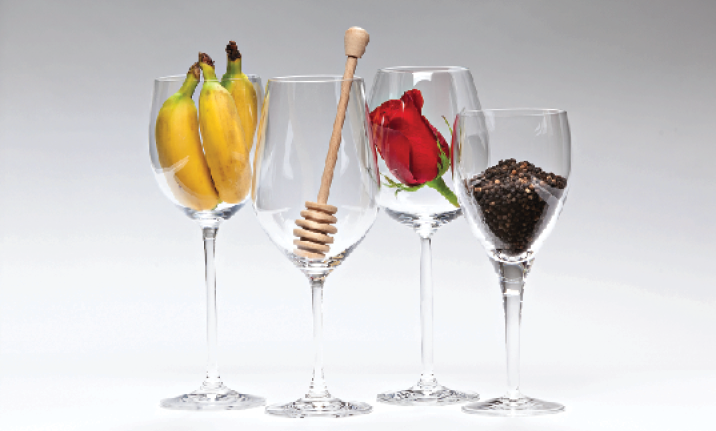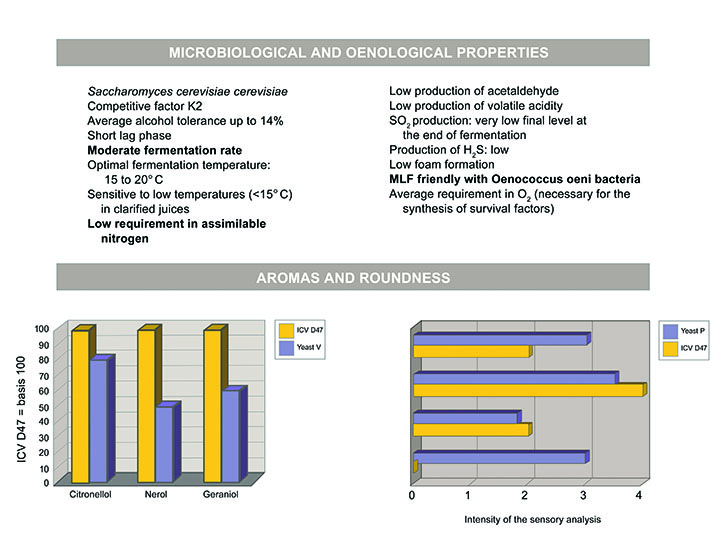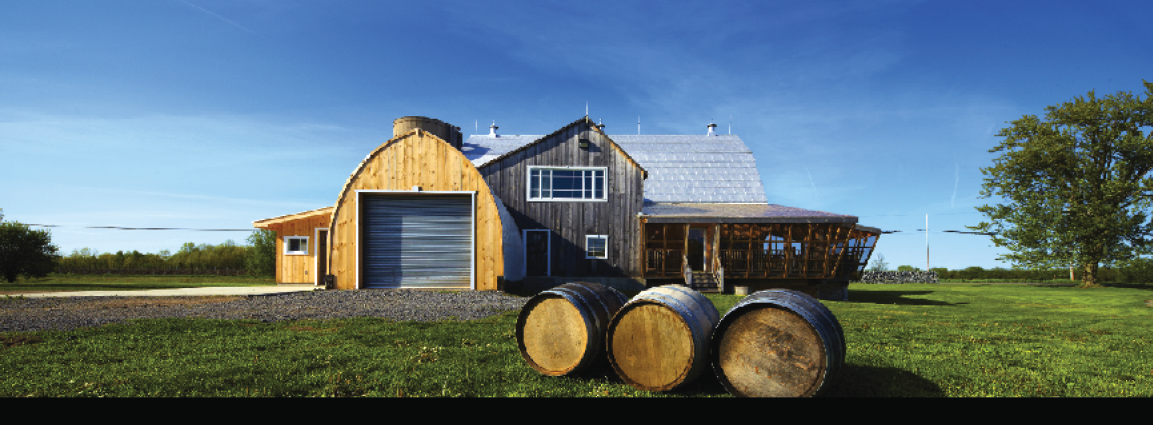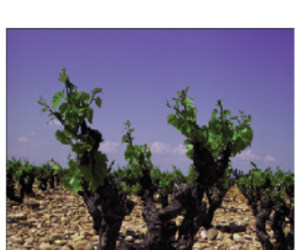
If you are of the opinion that yeast selection does not matter and that the only role of yeast is to convert sugar into ethyl alcohol (ethanol), you may have been missing out on making more complex wines. And if you source grapes or fresh juice from a third party and you rely on indigenous yeast to ferment sugars, you’re playing Russian roulette with your wine, not knowing the outcome — that is unless you are fortunate enough to own a centuries-old vineyard in Burgundy endowed with an established microflora.
With an unknown indigenous microflora, fermentation is often carried out by non-Saccharomyces yeast, some of which are not suited for winemaking conditions or which can quite possibly utilize and metabolize other substrates yielding unpredictable results that may lead to undesirable aromas and flavors. In general, non- Saccharomyces yeasts do not possess enological characteristics favorable to fermenting juice into wine.
Yeasts have a very complex metabolism and do so much more than simply convert sugar into ethanol — they also produce many other metabolites and act on other juice and wine substrates to effect changes on aromas, flavors, mouthfeel and color. But Saccharomyces cerevisiae wine yeasts are the most well-suited for making wine, great wine, that it; however, no two strains are alike.
Research in yeast microbiology has progressed tremendously in the last quarter century, and yeast manufacturers, the likes of Lallemand (Lalvin), Red Star, White Labs, Wyeast, Chr. Hansen and Laffort, in partnership with world-leading researchers at, for example, UC-Davis and the Institut Coopératif du Vin (ICV), have been working hard to isolate, develop, test and market a cornucopia of yeast strains now adapted to just about any varietal, wine style and winemaking conditions.
Except for aromatic varieties such as Muscats, Riesling, Gewürztraminer and Viognier, which owe their characteristic aromas in part to free monoterpenols (those pleasant-smelling compounds) found in grape skins, most varieties rely on yeast to free those monoterpenols and other aroma compounds from binding compounds during alcoholic fermentation. Unless yeast can break those bonds, the aromatics will remain sequestered and non-volatile, meaning they cannot be detected by olfaction.
But the role of the yeast, and more precisely yeast metabolites, does not end there. Metabolites produced from alcoholic fermentation are also implicated in chemical reactions with various other wine compounds that can transform the wine’s organoleptic qualities during aging.
Let’s take a closer look at S. cerevisiae yeast metabolism to get a better appreciation of its role in winemaking.
Yeast Physiology
You’ll recall from high-school biology that yeasts are unicellular microorganisms with a true and highly sophisticated nucleus. The nucleus is the “machinery” for cell growth and function, and stores the cell’s DNA that gives each strain their unique genetic personality. The cell is filled with a fluid, known as the cytosol, which contains countless specialized enzymes involved in catalyzing the many complex reactions in yeast metabolism. There are many other biologically important functional organs, or organelles, responsible for synthesizing vital proteins, for example.
All of these cell components are held within a permeable membrane, or cell wall, facilitating entry of sugars and regulating the exchange and transport of nutrients and other substrates into the cell and metabolites out into the wine medium. But more important from a winemaking perspective, the cell wall contains polysaccharides that can add layers and layers of complex aromas and flavors and enhance mouthfeel as yeast cells die and cell walls break down, a biological process known as autolysis. During autolysis, the cell also releases aroma compounds, flavor agents and peptides that may contribute sweetness. We’ll come back to autolysis later on.
Yeast Metabolism
All S. cerevisiae yeast strains convert sugars — glucose and fructose — into ethanol in similar fashion with carbon dioxide as a byproduct and glycerol in quantities directly proportional to the amount of sugar converted. After water and alcohol, glycerol is the third most significant metabolite, which can reach levels of up to 10 g/L (1%). But the kinds and amounts of other metabolites produced are what differentiate yeast strains. Important metabolites include esters, higher alcohols, acids, aldehydes, ketones, and volatile sulfur compounds.
Esters are compounds responsible for the many aromas found in fruits and flowers; there can be several hundred ethyl and acetate esters in wine. Esters have relatively high volatility (hence why they are often referred to as volatile esters) and solubility in water and alcohol. They are present in very low concentrations, some well below 1 mg/L (ppm), but have very low olfactory threshold, often in the μg/L (ppb) range. Examples of esters include isoamyl acetate, which imparts aromas of bananas, and phenylethanol acetate responsible for rose aromas. The kinds and amounts of esters are often used as a yeast strain’s selling feature; they are what winemakers look for. But esters can also reversibly (non-enzymatically) hydrolyze back to their acids and alcohols, and so, sulfite should be used to decrease ester hydrolysis and preserve aromas during maturation and bottle aging.
Lactones are esters too but where the compounds have morphed into cyclic structures that gives them different chemical properties. There are not significant lactones in wine, at least not in relevant quantities to have any organoleptic impact; lactones are prominent in oak-aged wines. The lactone sotolon, an extremely powerful aroma compound that imparts nutty and spicy aromas of almonds, curry and rancio, is however found in significant quantities in wines, such as Sherry, fermented using surface-yeast methods.
Higher alcohols are produced in small concentrations from amino acids and which can contribute positive aromatic characteristics to wine; however, they can impart off-aromas or mask other aromas at high levels, and so, the conversion of their amino acid precursors must be managed carefully by, for example, not adding excessive amino acid-based nutrients and keeping other rogue yeasts and bacteria in check with use of sulfite and good sanitation.
Predicting the effects on acids from fermentation is very complex. Tartaric acid is unaffected, but some S. cerevisiae strains can metabolize malic acid into other metabolites (not lactic acid, although lactic acid can result from a separate metabolic pathway). Succinic acid is a fermentation acid produced proportionally to the amount of ethanol produced and is typically found in wine at levels around 1 g/L or up to 2 g/L with some strains.
Pyruvic and acetic acids are two other important acids. Pyruvic acid is a key intermediate metabolite but is only of relevance in wine that is produced from rot-affected grapes. Yeast always produces some small amounts of (volatile) acetic acid, which only becomes detectable under spoilage conditions from acetic or lactic acid bacteria or from ethanol oxidation.
Acetaldehyde is the precursor to ethanol in yeast metabolism and is the most significant aldehyde in wine; it is best known for its nut-like smell reminiscent of Sherry-style wines. Yeast always produces some small amounts depending on the strain, nutrient availability, temperature and sulfur dioxide (SO2) concentration — SO2 irreversibly binds with acetaldehyde, which further increases production of the latter. And S. cerevisiae yeast strains tend to produce more acetaldehyde than non-S. cerevisiae strains. But acetaldehyde’s most interesting property is its ability to react with other wine compounds once it exits the yeast cell. We will come back to this as its effects are very significant in red winemaking.
Ketones are aroma compounds produced in small quantities. Familiar ketones include diacetyl and acetoin, which impart a pleasant buttery aroma, but these are mainly the result of lactic acid bacteria from malolactic fermentation (MLF).
Volatile sulfur compounds, or VSCs, have a very negative connotation as they impart foul odors or mask or amplify other compounds, and are commonly found in wines produced under highly reductive conditions (i.e. absence of air). Of the VSCs, hydrogen sulfide (H2S), well known for its unpleasant rotten-egg smell, is a common yeast metabolite; however, except for the UCD #522 (Montrachet) strain, levels are always below detection threshold.
H2S is produced most significantly from naturally occurring or yeast-derived sulfur-containing amino acids in the juice. H2S can also result from undue yeast cell stress such as yeast assimilable nitrogen (YAN) or vitamin deficiency; high levels of turbidity, soluble solids and total acidity; high fermentation temperature; external sources of sulfur compounds, such as sulfur-based vineyard sprays; and from enzymatic degradation of sulfur-containing compounds from autolysis when wine is left too long on dead yeast cells, especially when left on the gross lees.
Aroma and Flavor Compounds
Monoterpenols and norisoprenoids are powerful odorants found in tiny amounts in grapes, many in the ng/L (ppt) range, and having very low detection thresholds — they are what differentiate varietals.
Common monoterpenols include linalool, geraniol and nerol, which impart floral and rose-like aromas, and α-terpineol, which confers lilac scents. These compounds reside mostly in grape skins and to a lesser extent in the flesh.
Common norisoprenoids include β-damascenone, β-ionone, TDN (1,1,6-trimethyl-1,2-dihydronaphthalene) and vitispirane. β-damascenone is found in most grape varieties, and imparts aromas of roses and honey; β-ionone confers aromas of violets. TDN is the compound responsible for the pejorative-sounding petrol or kerosene smell — what many enophiles consider a positive attribute — in Riesling, particularly older ones. Vitispirane contributes aromas of exotic flowers, spices and wood.
There is also one notable sesquiterpene, rotundone, which imparts peppery aromas and which is found in such varietals as Grüner Veltliner, Syrah, Mourvèdre and Cabernet Sauvignon.
These aroma compounds exist in free (volatile) form and are therefore referred to as primary aromas, and bound (nonvolatile, odorless) form. Sugar or cysteine (an amino acid) molecules are the binders in the bound compounds. The magic of yeast is in its ability to cleave bonds between binders and aroma moieties to release their beautiful aromas; these referred to as secondary aromas.
Cleavage of sugar binders is accomplished via hydrolytic enzymes, such as β-glucosidases and β-glucanases, manufactured by yeast. White wines are usually supplemented with exogenous glycosidases as yeast glycosidases are only enzymatically active at a pH around 5, well above wine pH. But these should not be used in red wines as glycosidases can also cleave anthocyanins (red pigments) from their sugar binders, which would then destabilize color.
The cysteine-bound compounds are cleaved by non-hydrolytic lyases to release so-called long-chain polyfunctional thiols, such as 4-mercapto-4-methylpentan-2-one (4MMP), 3-mercaptohexyl acetate (3MHA) and 3-mercaptohexan-1-ol (3MH), responsible for imparting the distinctive aromas found in Sauvignon Blanc and particularly New Zealand Sauvignon Blancs with their characteristic citrusy, passion fruit and box tree aromas.
There are also secondary, free volatile and non-volatile metabolites that can undergo various types of enzymatic reactions to form new products, such as the reduction of vanillin into vanillic alcohol. Vanillin, or vanillaldehyde, is the compound that gives oak-aged wines their familiar aroma of vanilla. The well-known alcohol dehydrogenase (ADH) enzyme in yeast can reduce vanillin during barrel fermentation into the quasi odorless vanillic alcohol, hence one of the many reasons why barrel fermentation is different from barrel aging. It is the same with furfurals, or furanic aldehydes, which impart aromas of toasted almonds resulting from the barrel-toasting process, and which become enzymatically reduced into their alcohol forms during barrel fermentation to give wine less almond and toasted aromas.
Methoxypyrazines are the most significant non-precursor, flavor-active aroma volatile compounds found in the skins of Sauvignon grapes, and thus found in Cabernet Franc, Cabernet Sauvignon and Sauvignon Blanc wines. Methoxypyrazines are easily identified by their unmistakable, vegetative aromas of green peppers and asparagus. Methoxypyrazines are, however, unaffected by yeast fermentation.
Yeast and Polyphenols
Tannins and anthocyanins are the most significant compounds in reds and which can be modified yeast metabolites to alter color, flavors and mouthfeel.
Tannins first exist in monomeric forms, known as flavanols (or flavan-3-ols), but are mostly found as oligomeric and polymeric tannins, known as proanthocyanins, as monomeric and oligomeric tannins polymerize during winemaking and aging. Proanthocyanins contribute to astringency (mouthfeel) and bitterness (taste) in red wines, and so, they are considered flavor-active phenolic compounds. Hydrolyzable tannins extracted from oak wood during barrel fermentation also belong to this class of compounds. Anthocyanins have no aroma or flavor but are implicated in reactions with tannins and therefore affect astringency and bitterness (as well as color).
As yeast strains manufacture varying amounts of metabolites that can interact differently with phenolic compounds, each strain therefore has different effects and impacts on organoleptic qualities.
Anthocyanins can condense (combine) with yeast metabolites, such as acetaldehyde and pyruvic acid, in very complex reactions to form more stable pigments known as pyranoanthocyanins. These pigments may also impact color and color stability depending on wine pH; at higher pH, color becomes less stable. Yeast-secreted or exogenous bisulfite (HSO3–) ions can inhibit these reactions to form colorless anthocyanin–sulfate compounds and reduce the depth of color, as so, sulfite should not be used excessively in reds. Anthocyanins can also be adsorbed by yeast cell walls, therefore reducing the amount of these compounds that can interact to affect organoleptic qualities.
Yeast-derived acetaldehyde can cause condensation among anthocyanins, flavan-3-ols and proanthocyanins to form stable acetaldehyde-linked polymeric pigments. Anthocyanins can also condense with yeast-derived polysaccharides and glycoproteins, such as mannoproteins from yeast autolysis, to form polysaccharide– and glycoprotein–anthocyanin complexes. All of these reactions can lead to color changes and impact color stability.
Yeast Autolysis
Once yeast cells have completed their metabolic cycle and have run out of nutrients and die, the dead yeast cells, or lees, form a sediment layer at the bottom of the fermentation vessel. If left to interact with the wine, β-glucanase enzymes in cell walls will break down the dead yeast cells causing the degradation of cell macromolecules and release breakdown byproducts. β-glucanases can remain active for several months following cell death. Yeast autolysis is favored at higher pH and temperatures than what is encountered in winemaking; however, the long sojourn of wine on the lees compensates for the decrease in the autolytic process.
Major cell wall byproducts include glycoproteins, essentially mannoproteins, and polysaccharides, namely β-glucans and chitin. Mannoproteins form the outer layer of the yeast wall. There is a whole host of other byproducts, such as peptides, amino acids and fatty acids, all of which can alter organoleptic characteristics of wine. The amounts of byproducts and particularly mannoproteins generated vary by yeast strain. Active lactic acid bacteria during or after MLF can accelerate yeast autolysis and use some byproducts for their own metabolism.
S. Cerevisiae Yeast Selection
There are currently more than 200 commercial cultured S. cerevisiae yeast strains in dry or liquid formats for problem-free fermentations under a wide range of winemaking conditions. Given the different metabolites, extent of their production, the countless biological (enzymatic) and chemical reactions, and the many environmental factors that can impact yeast metabolism and fermentation, yeast strain properties and fermentation factors should be considered closely when choosing a strain to achieve predictable results and desired organoleptic qualities. Visit WineMaker’s online yeast chart for lists of available yeast strains from Lallemand (Lalvin), Red Star, Vintner’s Harvest, White Labs and Wyeast. You can also consult their websites for detailed performance information.
Now, I trust that this article has convinced you of the major role yeast strains play in winemaking, and that no two strains are alike. So choose wisely!







